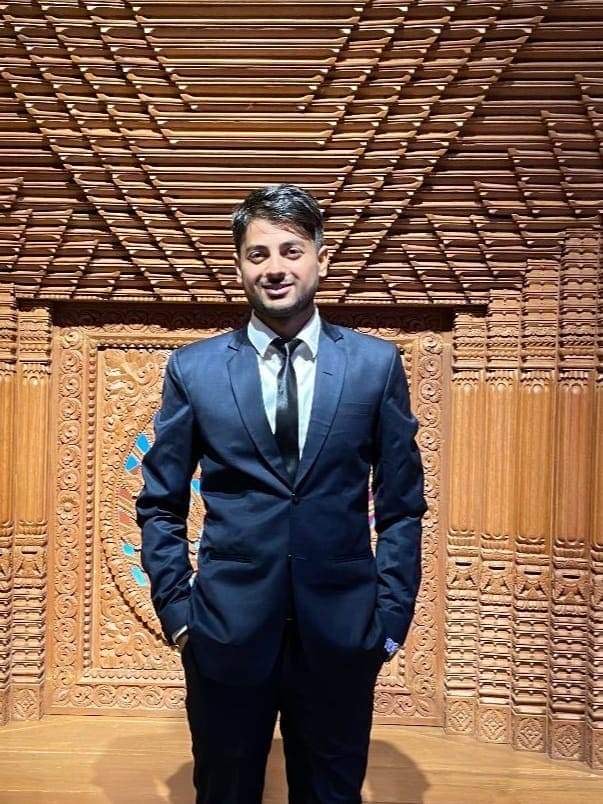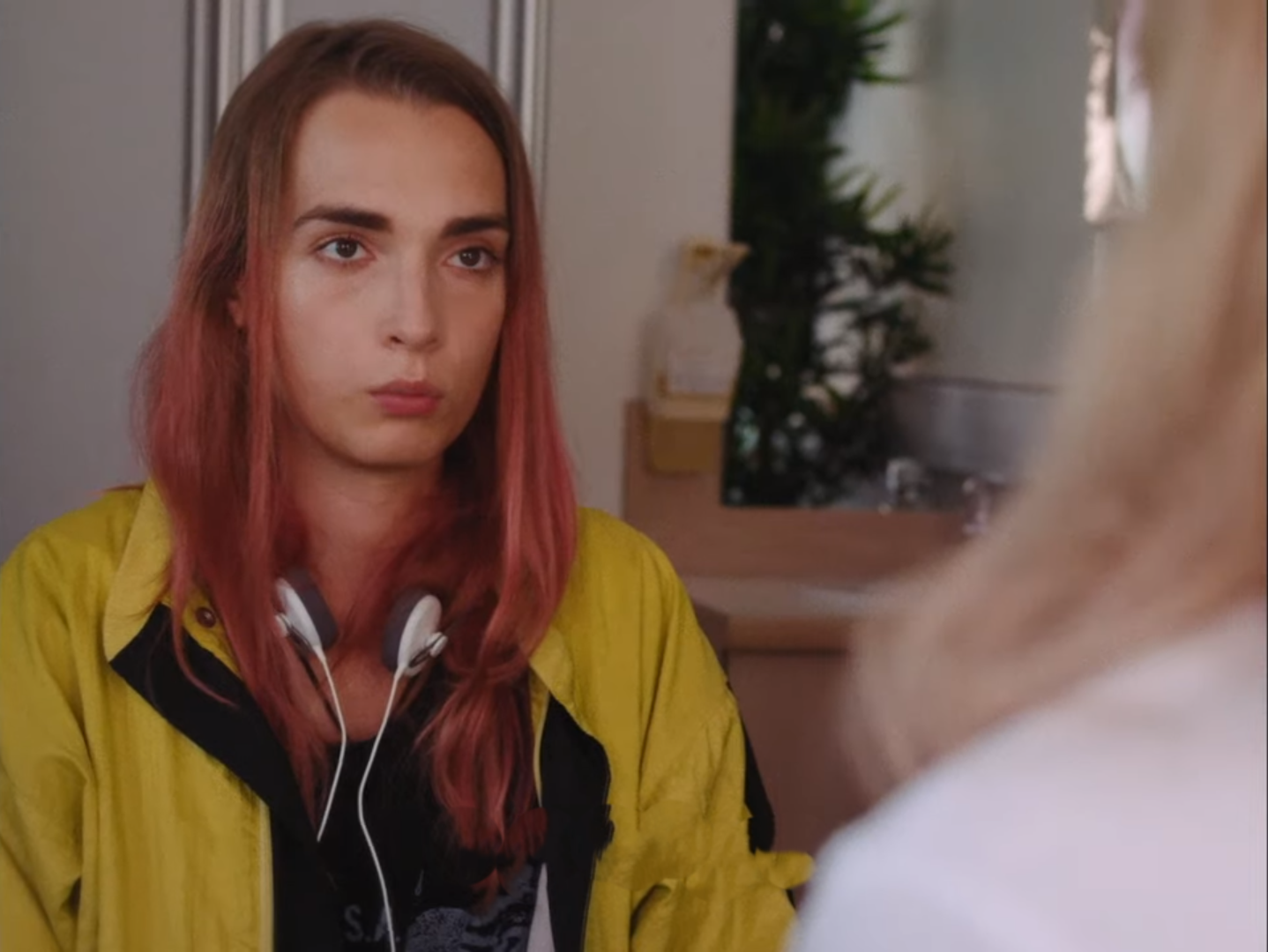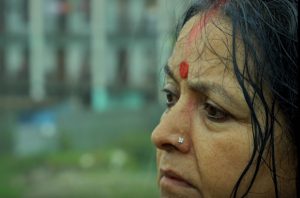
Disclaimer: The review contains a spoiler.
Every movie is, in one way or another, a product of the director’s vision. In other words, it is what they see through their eyes. This concept takes a more literal meaning in Zaun Yonzan’s Aankha. Aankha’s story is about people who live in the slums of Kathmandu. It is about how the system blocks every effort to escape from it. The story follows a more episodic structure than a three-arc structure.
The movie opens with the central protagonists Ravindra (RK Mehta) and Sarita (Smita Lamichhane). The camera pans to the left following a taxi and the newlywed couple steps out. He has no home and no land and works as a garbage collector. Although there is no mention of a specific location, we get hints that Ravindra is from a village in Terai. Sarita is also an outsider. She was the only daughter in the family whose family could not afford to pay dowry. So to save her family from this trouble she agreed to marry a guy of a lower caste.
Exploring moral dilemmas and societal struggles
Instead of seeing this flashback, we hear about it from the characters. As far as the past goes, we get very little information yet we can relate to them primarily for two reasons. One is the affecting performance by both the leads. The second reason is that these characters on paper and on-screen are the archetypal characters. We know the skeleton of the characters. And it is up to the movie to make them interesting or make them flesh-and-bones characters for us.
Ravindra is as straight as an arrow. He lives by the code that we should in every case tell the truth. There is no middle road. He chooses to tell the truth when he has to lie to get a room. Unlike others, he is not ashamed of being a garbage collector.
Sarita dreams of a more easygoing lifestyle and wants them to escape from the slum. She even throws away her moral code and begins to steal. But, we do not see her mental struggle to bypass her morals. The movie, through an entourage of characters, tries to paint a larger picture of the society and people who live in these slums.
So we get a woman in an abusive marriage, a mentally unstable guy, and another woman who dreams of moving away to lead a better life. The common thread is that all of them want to escape this place as it is not just about the living conditions. It is also about how they are treated by society. No one is willing to lend a room or they are the ones to get blamed when some household items go missing.
Since it follows a more episodic structure no larger threat or situation comes into play. This on paper might have sounded like an interesting idea but on screen, the execution leaves a lot of gaps.
Flat characters and overt metaphors
Characters are introduced and they neither lead up to anywhere nor manage to become flesh and blood human beings. An example of this is the character essayed by Bijay Baral. We are told that he was primed to leave this slum for a better life. He was talented and could have escaped if not for an unfortunate incident. As an audience, we keep waiting if we will either verify this story from him or if he will play an important role later on but none happens. It does not help that the character is played by a familiar face, unlike the lead characters.
Take another character played by Nisha Adhikari, who is meant to represent the other side i.e. rich and well off but does not turn into a flesh and blood character. And we see the metaphor of the oppressor and the oppressed visually. When we first see the Madam, she is sitting on the balcony of the top floor while Sarita is downstairs at the bottom. At another point, Sarita is massaging her leg while the Madam is being more affectionate to a cat than Sarita. In other words, a mere cat has a better lifestyle than a human being.
But all of these metaphors are not subtle which would have been fine if the tone of the movie was in melodramatic territory. As a result, these metaphors do not feel as affecting as they should. Scenes play out in a rather longer takes like the scene where both Sarita and Didi (Pashupati Rai) wash clothes. But the long takes in itself do not mean much if the writing is not solid. All the visuals (the matching cuts) and sound design’s bravado (the rattling of the tin as the plane goes nearby) can not carry the story alone.
The scenes are shot well by DOP Aalok Shukla. The long takes add a feel of realism to the scenes and there are nice contrasts to the lighting between Ravindra and Smita’s house and the rich household. Their house is swallowed by darkness and the scenes are shot with rather tight frames compared to the rather wide and open spaces of the rich homes. In the rich household, the rooms are flooded with light, spotlessly white.
Unresolved subplots and underdeveloped characters
The sound design by Kishor Acharya also adds a nice touch to the realism. The trickling of water down the roof, and the howling screams at night time all feel real even though the movie was not shot in sync sound.
Some of the dialogues are rather heavyhanded. Characters keep on saying lines like, “I left my husband because I wanted to escape the cage,” or “Even the great blue sky is killed by the Sun.” And the actors apart from Rajan Khatiwada, who plays the boss of Ravindra can not pull off these rather heavy-handed dialogues. He makes an impression even though his character on paper has a very small role and has a rather clunky appearance at the end.
Again, this is not to say that Aankha is a really bad movie. It is quite watchable and takes a different approach to storytelling but there are so many unresolved or rather unexplored threads. Why do we see virtually nothing of the woman next door who accepts domestic violence? And, why will an audience care about her monologue at the end without any connection? Why will the audience care about the child whom we see through the passage of the story but apart from that have no other information?
Like his mother, he is also an archetypal character. The movie is more focused on ideas and situations rather than exploring the full consequences of it. Had it done that it would have managed to not just tell the story of two characters but of a whole community. But, that might have been too ambitious for a young director who seems to be discovering stories through his eyes. Due to this, it remains an earnest effort which could have been a much better movie.
All of these lead to the topic of the tone and complexity of the Nepali films during these transitional periods (which seems to be going on and on). It is not a judgment on Aankha but on rather all Nepali movies.
Being subtle does not automatically lead to better movies. Subtlety like melodrama is a choice of tone for telling a story. Long shots do not automatically mean better cinematography or better scenes. The story must have well-written three-dimensional characters and well-written scenes regardless of the tone. Until that happens, we are only going to get earnest efforts that strive to reach greatness but are on the wrong track.
























